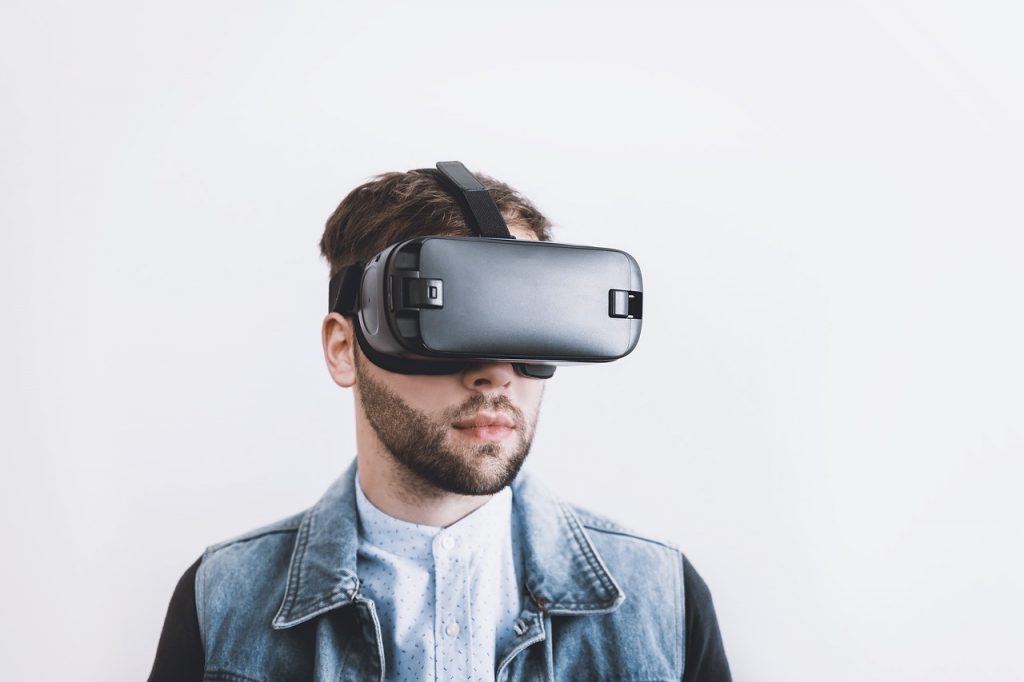The world we live in is constantly changing and progressing. Beginning as tiny single-celled organisms, humans have continued growing, and with every generation, massive steps in technology and science felt. One such major leap is in the world of virtual reality or VR. No longer a concept in films like “The Matrix” or “Inception,” the creation and rapid expansion of VR has changed ways in which people interact with their surroundings.

While many people instantly associate VR with robust headsets, the first conceptualization of this technology goes as far back as the 1930s. In his book, “Pygmalion Spectacles,” American science fiction writer Stanley G. Weinbaum describes a goggle-based environment where participants can watch holographic projections of virtual stories. In these holographic projections, senses of touch and smell would also activate.
VR and Military Training
By the 1960s, the development of headsets reached a significant breakthrough due to the innovative skills of Ivann Sutherland. Headsets, used for the purposes of military training, allowed for advanced situational experiences without risk of injury, along with a motion control platform. This new technology became crucial in the training and development of pilots. It is now common practice and rule that pilots must undergo extensive hours of training before admission into an aircraft.
An immersive and challenging environment has always been incredibly important in military training. As a result of precise satellite imagery, street-view configurations and other information, photorealistic training courses are available. While the military has used VR technologies for a long time, the creation of “Synthetic Training Environment,” has changed everything. Before the creation of this technology, soldiers would train in environments that mirrored one possible terrain and challenge. But now, through synthetic environments, leaders and mentors of soldiers can create real-time representations.
Such comes in handy when a soldier has to deploy because while men and women of years past had to quickly adapt to new surroundings, realistic-environment simulations afford troops the luxury of foresight. With virtual versions of places like North Korea, San Francisco and New York, guesswork trades for assurance and peace of mind.
From our partners:

VR and Gaming
By the 1990s, the VR space made tremendous strides in the gaming industry. Japanese video game developer, Sega introduced the Sega VR headset, which included stereo sound, LCD screens and head tracking technologies. While early VR prototypes withered away as a result of high costs and lack of usability, these were the first steps of a much bigger picture.
When social media powerhouse Facebook acquired the Oculus VR system (in 2014), it signaled that VR was not a trend but a mainstay of our culture. Oculus, formed through the Kickstarter platform, brands itself as a virtual reality technology used in the comfort of your home. With Oculus and the advent of other similar technologies, VR software continues to become more accessible to the average consumer. Once viewed as an expense that only those with a lot of money could afford, companies have started to match the demand for simulation experiences with the economic status of their most loyal fans.
VR and the Medical Field
With advancements in technology, the medical field also looks to experiment with new forms of treatment and therapy. That’s especially true when it comes to mental health, as VR fills in the gaps for often ignored problems that affect millions. Even organizations like the National Health Service have implemented simple yet powerful techniques to help their patients achieve some sense of relief with this technology. In such instances, VR guides patients through stressful situations.
Known as exposure therapy, the most common types of medical VR are in the areas of addiction and trauma. Before VR, exposure therapy required patients to be in the physical presence of whatever that caused their discomfort. With new technologies, a patient has a smaller barrier to entry and can take the first steps in overcoming any obstacle.
VR and Beyond
The world continues to grow and expand, especially regarding technology. Once thought to be something that was only possible in Hollywood movies, VR has changed the game, enhancing life’s journey. Though it faces criticism from professionals that worry about the potential effects the technology may have on cognitive degeneration, it seems as though it has only scratched the surface when it comes to VR.













